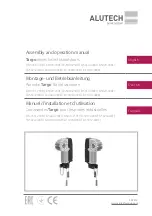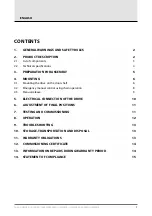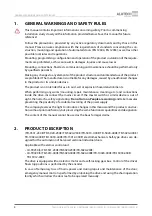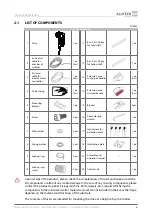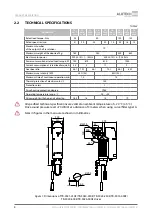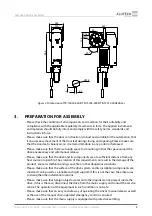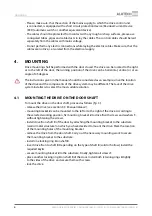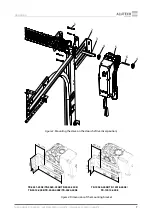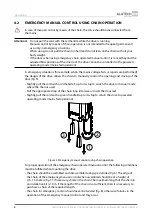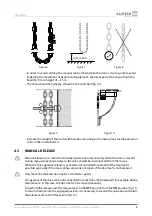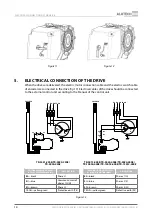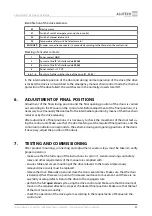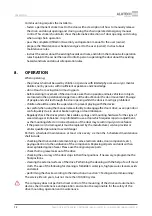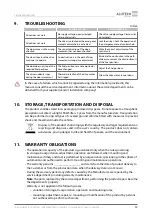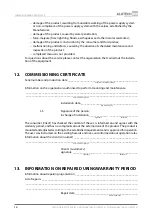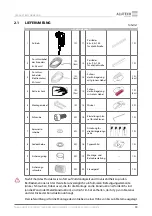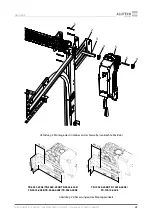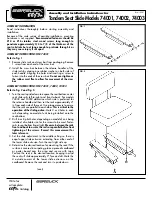
TARGO DRIVES (TR SERIES)
|
ANTRIEBE TARGO (SERIE TR)
|
COMMANDES TARGO (SÉRIE TR)
8
MOUNTING
4.2
EMERGENCY MANUAL CONTROL USING CHAIN OPERATION
Y
In case of manual control by means of the chain, the drive should be disconnected from
the mains.
Attention!
Do not pull the cord with the red handle while the drive is running.
Manual control by means of chain operation is not intended for frequent (permanent)
use, only in emergency situations.
When using, do not pull the chain too hard and do not lean on the chain with all your
body weight.
If the door, when using emergency chain operated manual control, is moved beyond the
adjusted final positions of the door leaf, the drive cannot be controlled in the powered
operating mode (mains-fed operation).
In emergency situations (for example, when the mains voltage fails or repairs are performed),
the design of the drive allows the chain to manually control the opening and closing of the
door (
fig.
5).
• Slightly pull the cord with a red handle
1
up to its stop to switch the drive to manual mode
where the chain is used.
• Pull the appropriate drop of the chain loop
2
to raise or lower the door leaf.
• Slightly pull the cord with a green handle
3
up to its stop to return the drive to powered
operating mode (mains-fed operation).
1
2
3
Figure 5.
Emergency manual control using chain operation
For proper operation of the emergency chain operated manual control, the following conditions
must be fulfilled when mounting the drive:
• the chain should be assembled and disassembled using special links (
fig.
6). The edge of
the chain of the emergency manual control when assembled should be at a height of
0.5 ~ 1.5 meters (
fig.
7). If necessary, shorten the chain. The maximum length of the chain in
an installation kit is 10 m. If the length of the chain is not sufficient, then it is necessary to
purchase a chain of the required length.
• the chain for emergency control should never be twisted (
fig.
8), otherwise, failures in the
operation of the emergency manual control unit may occur.

